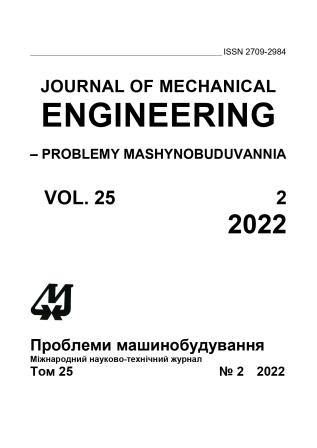Sliding Thrust Bearings with Self-Generated Fluid Pivots
Abstract
The article discusses the disadvantages of thrust sliding bearings with mechanical supports and mechanical balancing systems similar to the Kingsbury system. Requirements for the design of thrust bearings corresponding to the current level of development of dynamic equipment are formulated. The design of thrust bearings using a hydrostatic suspension is proposed to eliminate the disadvantages of thrust bearings with mechanical supports and balancing systems. The modern design of the bearing developed by TRIZ LTD with mechanical bearings, which meets the requirements of the optimal choice of bearing the best, is given in this article with its ad-vantages and disadvantages inherent in all mechanical systems. The given results of the TRIZ LTD work on the creation of thrust sliding bearings with the replacement of mechanical bearings and mechanical balancing of thrust elements with self-generated fluid elements are used with traditional oil systems. The developed original technical solutions made it possible to reduce the axial subsidence, the number of parts, axial dimensions, noise, axial vibration. Various designs of thrust bearings with self-generated fluid pivots, which most fully satisfy the requirements for the optimal choice of a thrust bearing design and their comparative characteristics in comparison with design of a thrust bearing with mechanical supports of bearing pads and a mechanical alignment system obtained during their testing at the bench are given. Thrust bearings with self-generated fluid pivots are recommended for new developments of rotary equipment, as well as for modernization of equipment operated to increase overhaul mileage, reduce maintenance time, increase reliability and efficiency of equipment due to higher bearing capacity, effective damping and practical axial subsidence from force.
Downloads
Published
Issue
Section
License
Copyright (c) 2022 В. С. Марцинковский, К. Ю. Любченко, А. А. Прокопенко, А. Д. Лазаренко

This work is licensed under a Creative Commons Attribution-NoDerivatives 4.0 International License.
All authors agree with the following conditions:
- The authors reserve the right to claim authorship of their work and transfer to the journal the right of first publication of the work under the license agreement (the agreement).
- Authors have a right to conclude independently additional agreement on non-exclusive spreading the work in the form in which it was published by the jpurnal (for example, to place the work in institution repository or to publish as a part of a monograph), providing a link to the first publication of the work in this journal.
- Journal policy allows authors to place the manuscript in the Internet (for example, in the institution repository or on a personal web sites) both before its submission to the editorial board and during its editorial processing, as this ensures the productive scientific discussion and impact positively on the efficiency and dynamics of citation of published work (see The Effect of Open Access).

